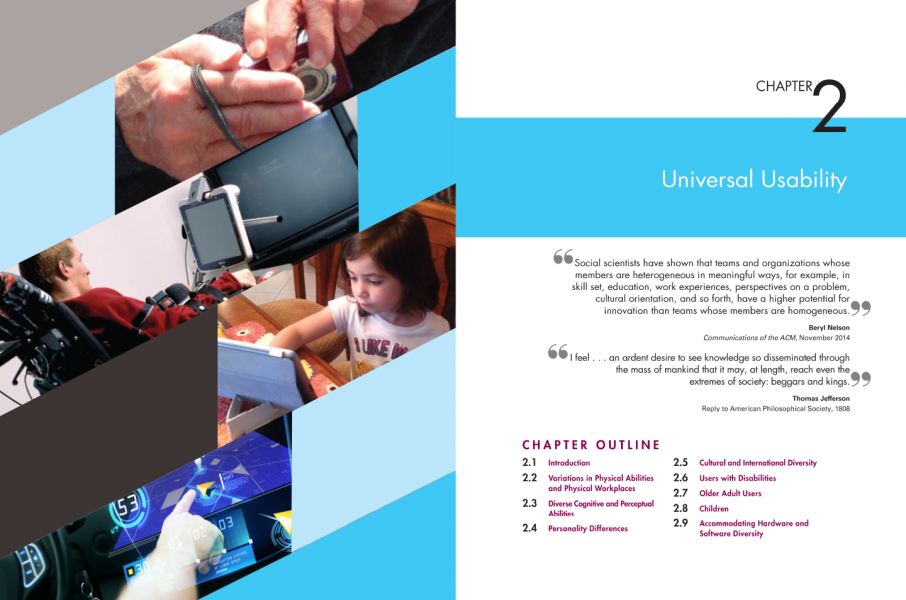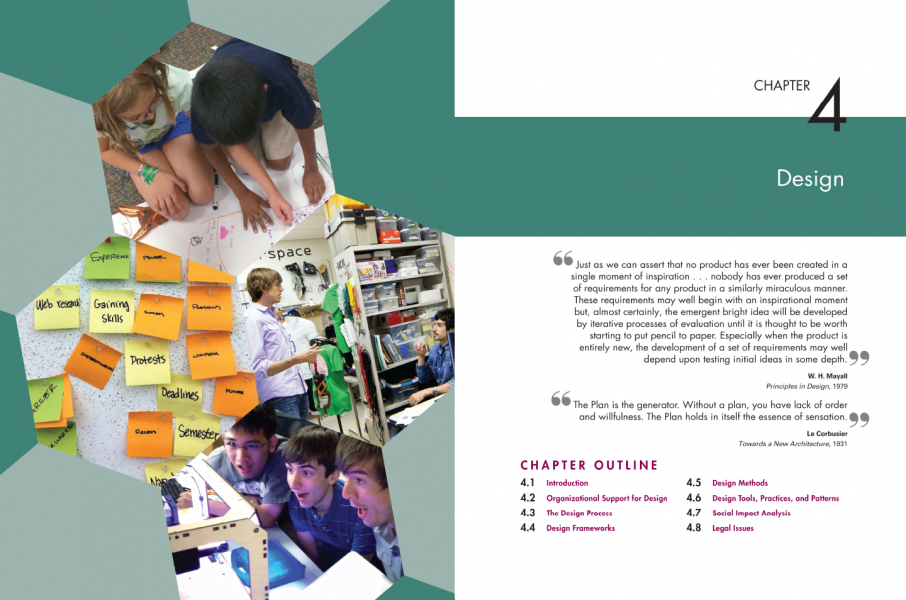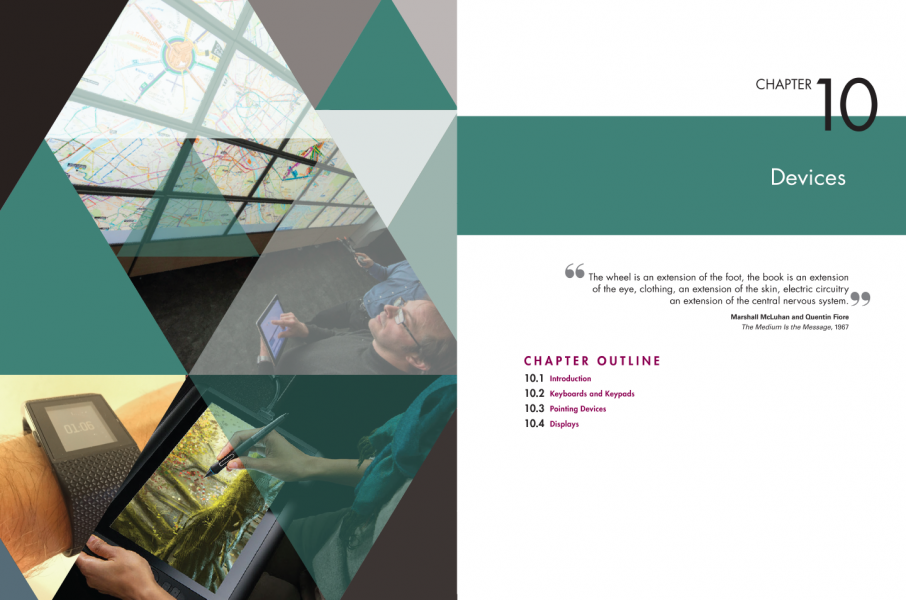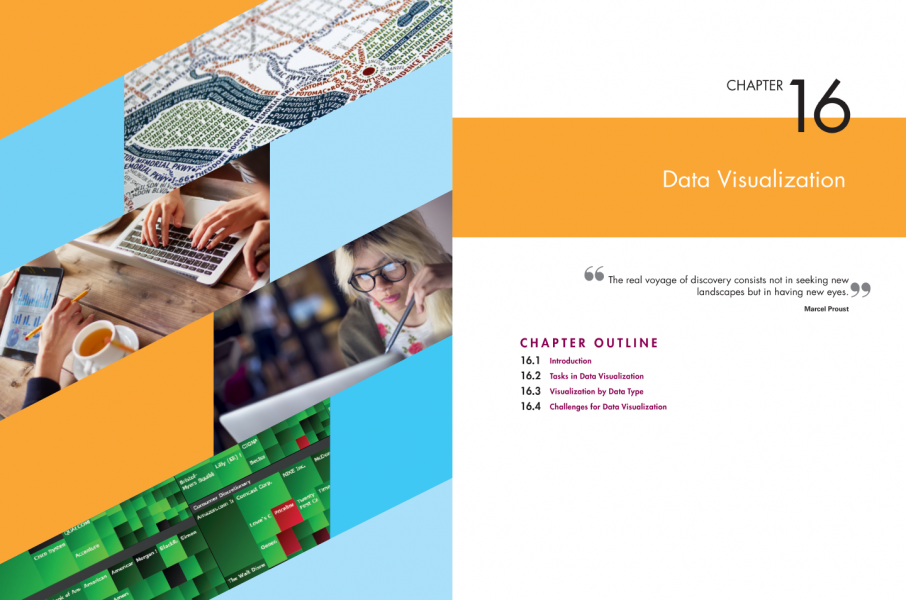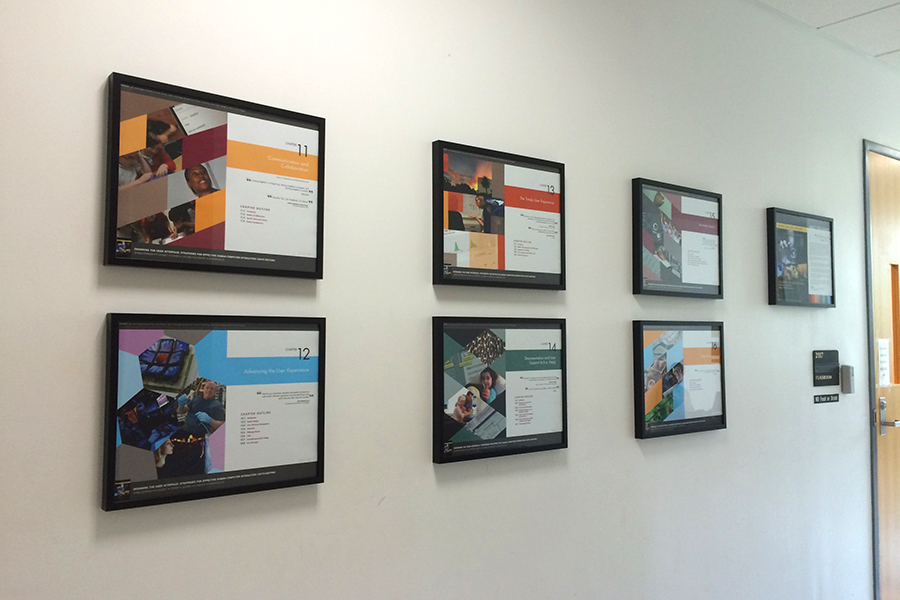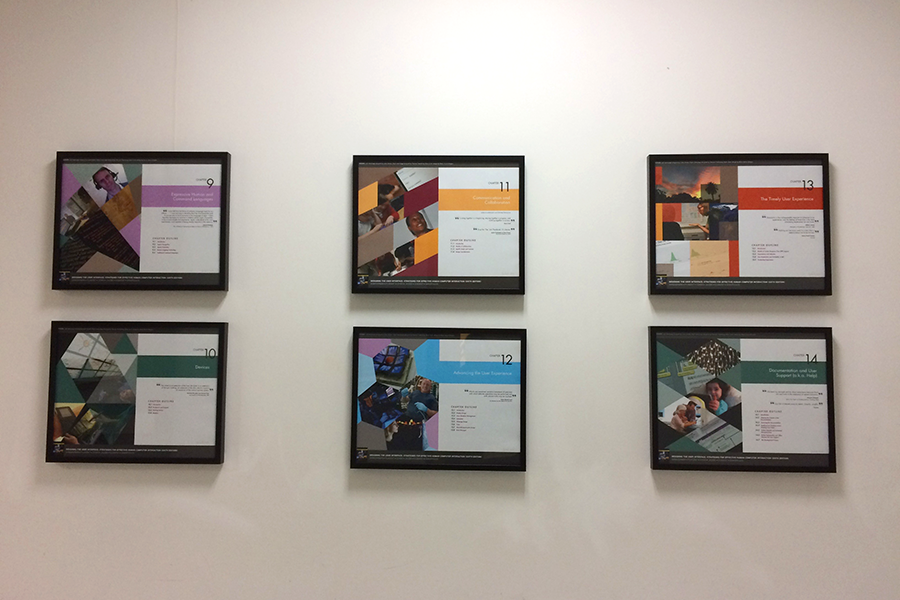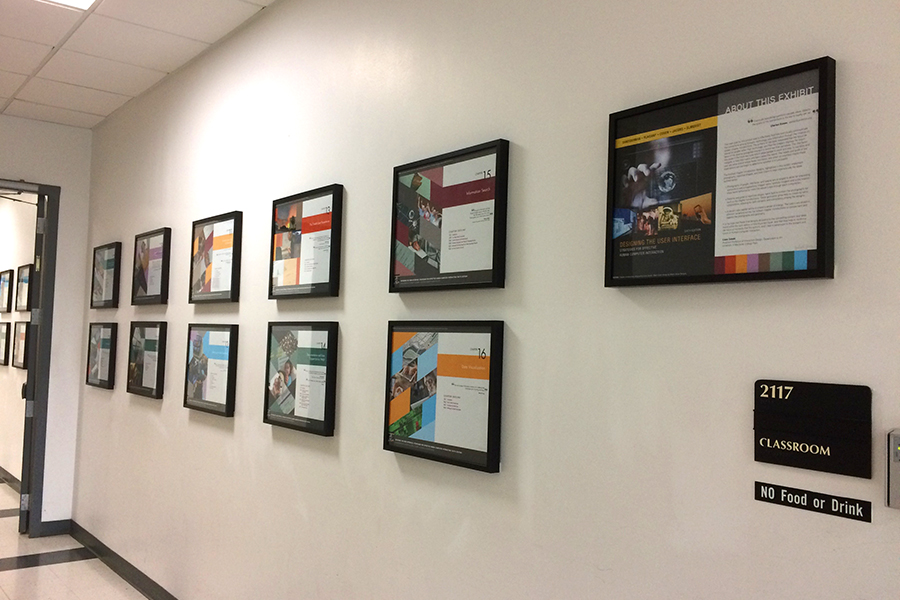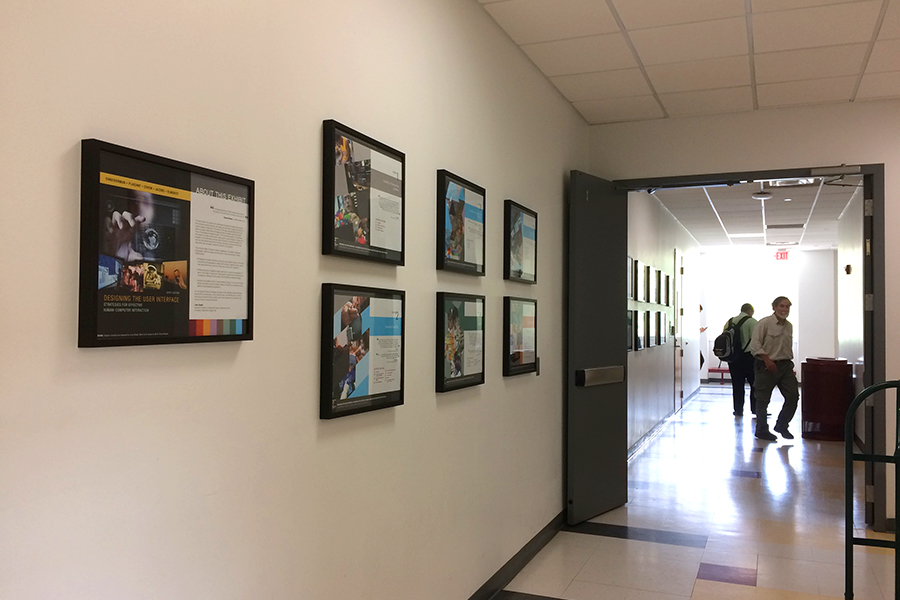I had the pleasure of working with Ben Shneiderman, Catherine Plaisant and several others on the newest edition of the seminal book: Designing the User Interface. My role in the project began in August of 2015—I was asked to design the opening pages for the sixteen chapters in the book. The authors also requested that I reformat these pages into large prints for an exhibition of the work in the Computer Science Instructional Center on the University of Maryland’s campus.
Here is the text from the “about this exhibit” panel I wrote and included with the exhibition:
The main goal for this project was to effectively illustrate and visually communicate the connections among humans, technology, and information through the creation of sixteen chapter introductions. The authors of the book requested that the focus be placed on people rather than technology, and that the imagery express the importance of the diverse and global moment in which we find ourselves. The interfaces discussed in the book are tools which allow people to work and play, to socialize and navigate, to find information and learn about the world. The needs and goals of the user are what should shape these interfaces, and when an interface meets these expectations we can begin to determine whether it is successful.
The finished chapter introduction designs, highlighted in this exhibit, implement photography, repetitive shapes, and bold colors to help communicate the ideas outlined above.
+ Photographs of people, interfaces, and spaces are arranged to allow for interesting connections and juxtapositions. Images were carefully cropped and scale relationships were fashioned to move the viewer’s eye through each composition.
+ Patterns and grids of repetitive shapes were built to contain the photographs for each of the chapter introductions. These geometric grids help to create dynamic compositions, allowing for both variation and consistency among the designs.
+ A vibrant color palette works to create a sense of energy. The colors are mixed in different variations across the sixteen chapter introductions to complement and balance the photographs and geometry.
It is my hope that these final designs do justice to the compelling content and ideas found within the sixth edition of this important book, and that they help to reinforce the focus on humanity that the authors, and I, feel is paramount to the present and future of Human-Computer Interaction.
You can learn more about the book here.


